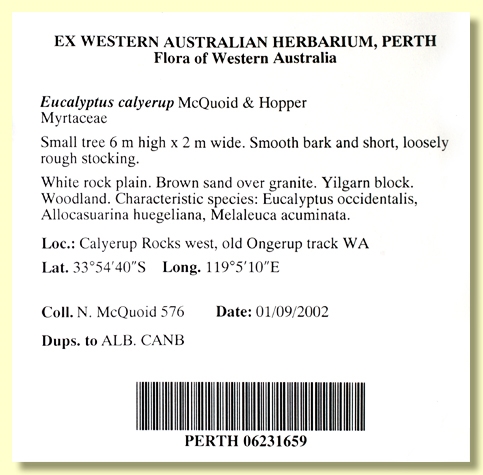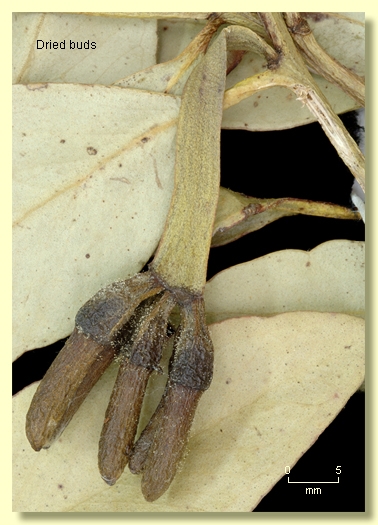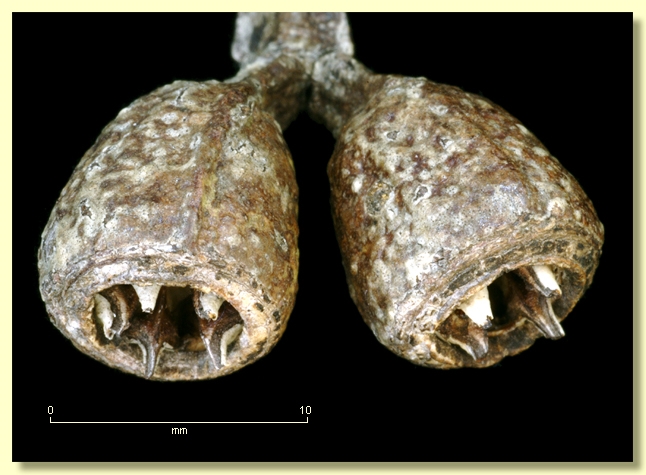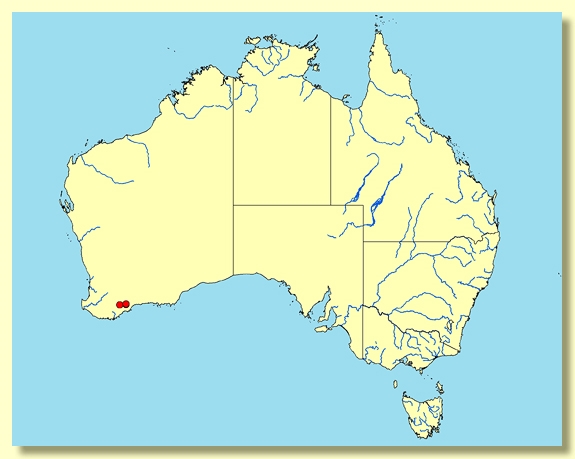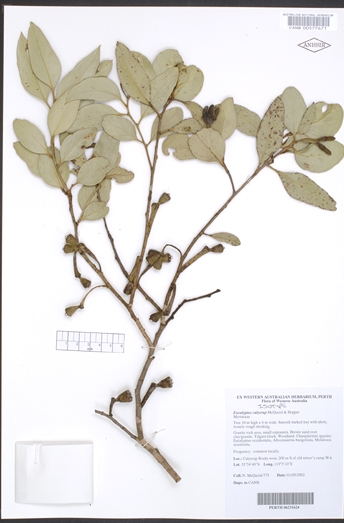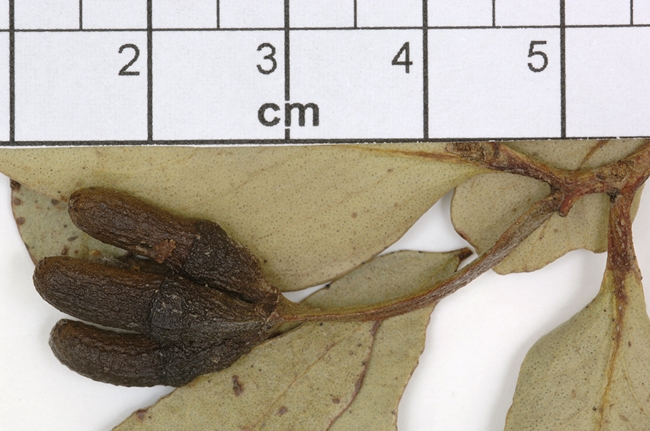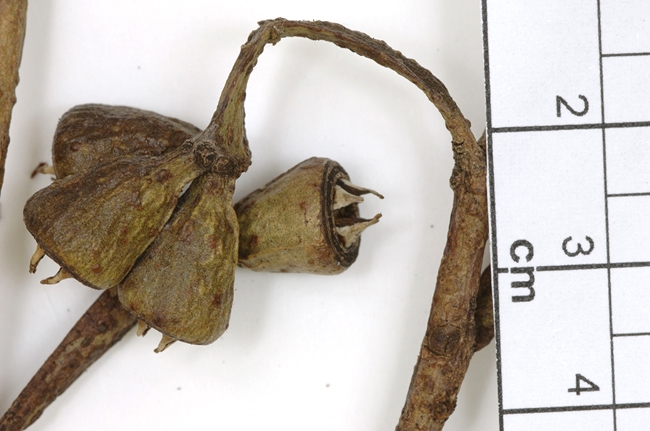Miscellaneous hybrids
Euclid - Online edition
Eucalyptus calyerup
Tree to 10 m tall. Lignotuber present or absent.
Bark rough over the lower part of the trunk only, for up to 0.7 m, blackish grey, loose, fissured, fibrous, shedding in strips at its upper limit, smooth on upper trunk and branches, white to cream, pink and pale grey; sometimes smooth throughout.
Branchlets have oil glands in the pith.
Juvenile growth (coppice or field seedlings to 50 cm): (from McQuoid & Hopper, ibid.) juvenile leaves always petiolate, alternate, ovate, 4.5–6 cm long, 3–4 cm wide, blue-green.
Adult leaves alternate, petioles 0.5–1.5 cm long; blade ovate to elliptical, sometimes becoming lanceolate, 3.8–7.7 cm long, 1.5–4 cm wide, base tapering to petiole, thick-textured, margin entire or distantly indented, apex acute or rounded, concolorous, glossy, green, side-veins at an acute angle, reticulation sparse, intramarginal vein remote from margin, oil glands numerous, island.
Inflorescence axillary unbranched, spreading, peduncles broadly flattened, 2–3.5 cm long, buds 7 per umbel, pedicels 0.2–0.4 cm long. Mature buds elongated, ca 2–3.3 cm long, 0.5–0.8 cm wide, widest on the hypanthium near join of the operculum, two ridges present on sides of hypanthium leading down to pedicel, scar present (outer operculum shed early), inner operculum horn-shaped, ca twice the length of the hypanthium, blunt or pointed, stamens erect, anthers oblong, versatile, dorsifixed, dehiscing by longitudinal slits, style long and straight, stigma blunt, locules 4, the placentae each with 4 vertical rows of ovules. Flowers creamy yellow.
Fruit spreading, pedicellate (pedicels 0.2–0.3 cm long), obconical to campanulate, 0.8–1.4(1.7) cm long, 0.8–1.2 cm wide, disc at first level then descending, valves 4, at about rim level.
Seeds dark brown, 1–1.5 mm long, ovoid to flattened-ovoid, dorsal surface shallowly reticulate, hilum ventral.
Cultivated seedlings (measured at node 10): not grown (by us).
Flowering has been recorded in October, November and December (McQuoid & Hopper, Nuytsia 15 (2002)).
Small tree purported to be of hybrid origin, endemic to southern Western Australia, with populations occurring in the Calyerup Rocks and Monkey Rocks area east of Jerramungup, and Lake Coyrecup area east of Katanning, and individuals occurring occasionally in other areas where the parents, Eucalyptus occidentalis and E. platypus subsp. platypus, grow. Eucalyptus calyerup has a short fissured stocking of dark grey rough bark, glossy green crown of predominantly ovate-elliptic leaves, elongated buds and predominantly obconical fruit.
According to McQuoid & Hopper (2002) E. calyerup grows with one of its parents — E. occidentalis — but not the other. It can be distinguished from E. occidentalis by the smaller amount of rough bark not so tightly held on the trunk, ovate-elliptical to shortly lanceolate rather than truly lanceolate adult leaves, sparse reticulation in adult leaves (moderate to dense in E. occidentalis), buds and fruit with two distinct longitudinal ridges and more obconical fruit with less prominent valves.
Eucalyptus calyerup was described after the publication of Brooker (2000) and thus is not included in his classification of the eucalypts.
Eucalyptus calyerup: after Calyerup, the Nyoongar Aboriginal name for the area where the type specimen was collected, Calyerup Rocks.


